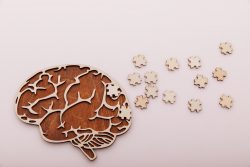 In aging, a lot of things happen including inflammation, stress, and changes in metabolism. A group of scientists has now found that a type of lipid called SGDGs (3-sulfogalactosyl diacylglycerols) declines in the brain as we age. These molecules may lead to the discovery of new ways to treat neurological diseases due to aging. The study helps understand the molecular basis of aging of the brain and offers new avenues of therapeutic intervention.
In aging, a lot of things happen including inflammation, stress, and changes in metabolism. A group of scientists has now found that a type of lipid called SGDGs (3-sulfogalactosyl diacylglycerols) declines in the brain as we age. These molecules may lead to the discovery of new ways to treat neurological diseases due to aging. The study helps understand the molecular basis of aging of the brain and offers new avenues of therapeutic intervention.
The study found the molecular basis of declining anti-inflammatory molecules in the aging brain may be due to processes that regulate aging. Lipids play a crucial role in this process.
The research team discovered three things involving anti-inflammatory molecules. The family members of SGDGs and associated lipids are changed substantially with the aging process. They may be guided by processes that regulate the aging process, and lipid levels are very different in older mice than younger mice. This may play an important role in the decline of anti-inflammatory molecules. This is an important discovery that should be studied further.
The researchers used liquid chromatography-mass spectrometry to study the brains of mice at five different ages. They then used advanced data analytics to find patterns in the lipid profiles that were age-related. Next, they built SGDG molecules that were then tested for biological activity. This research provides new insight into the molecular mechanisms that contribute to inflammation in the aging brain.
SGDGs are molecules that have anti-inflammatory properties. This could be indicative for neurodegenerative conditions and disorders that can involve an increase of brain inflammation.
They also discovered that SGDGs are present in primate and human brains, which suggests that SGDGs can play a crucial role in other animals besides mice. Ongoing research is needed to show if SGDGs influence human neuroinflammation.
The research team will further study how SGDGs regulate the process of aging, and the proteins that break them down and make them. This could help to uncover novel genetic activity linked with aging. The study of these significant lipids is completely open for discovery, with the understanding of the structure of them and the team’s skill to construct them in a lab.
To view the original scientific study click below:
A class of anti-inflammatory lipids decrease with aging in the central nervous system





